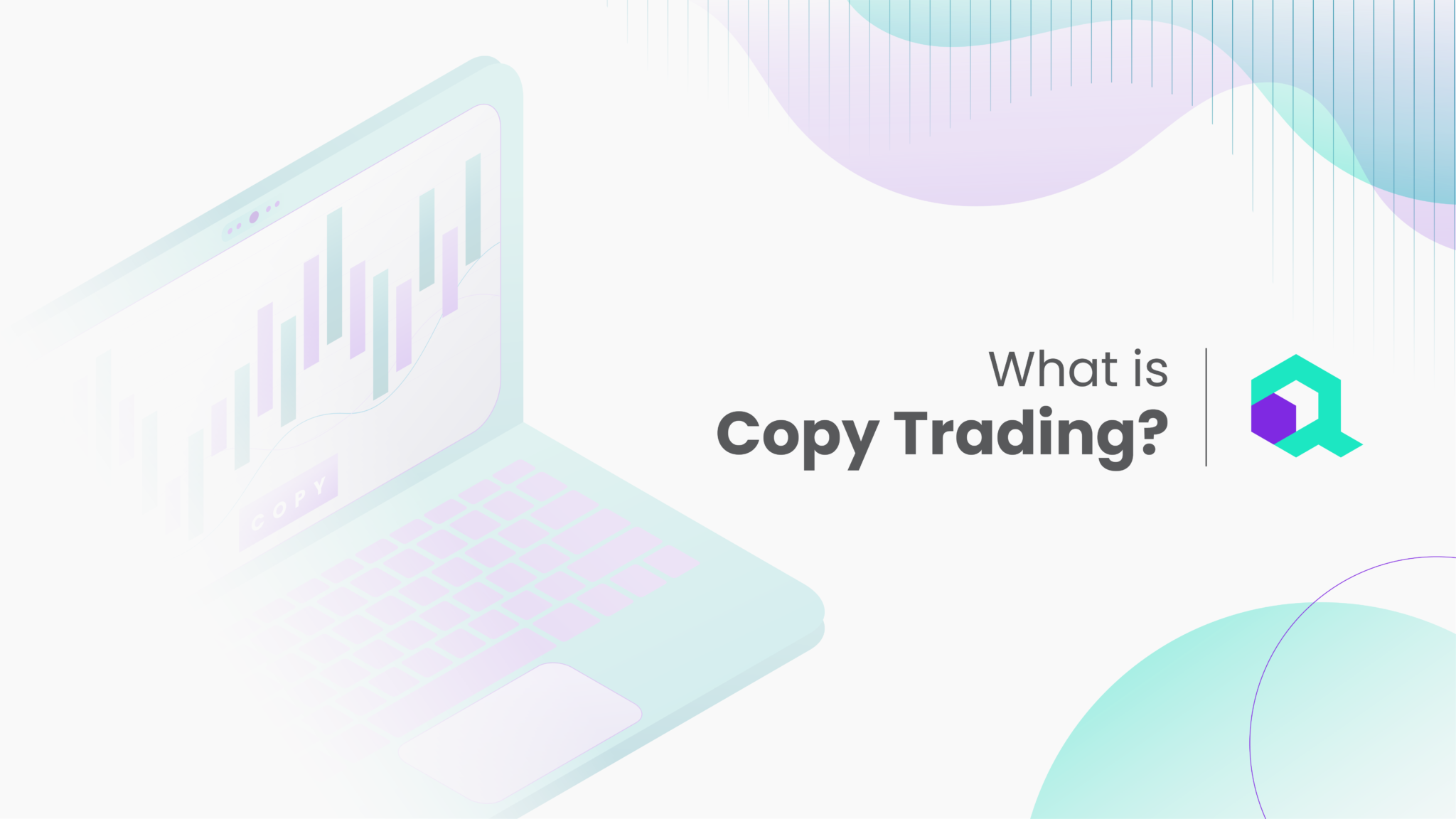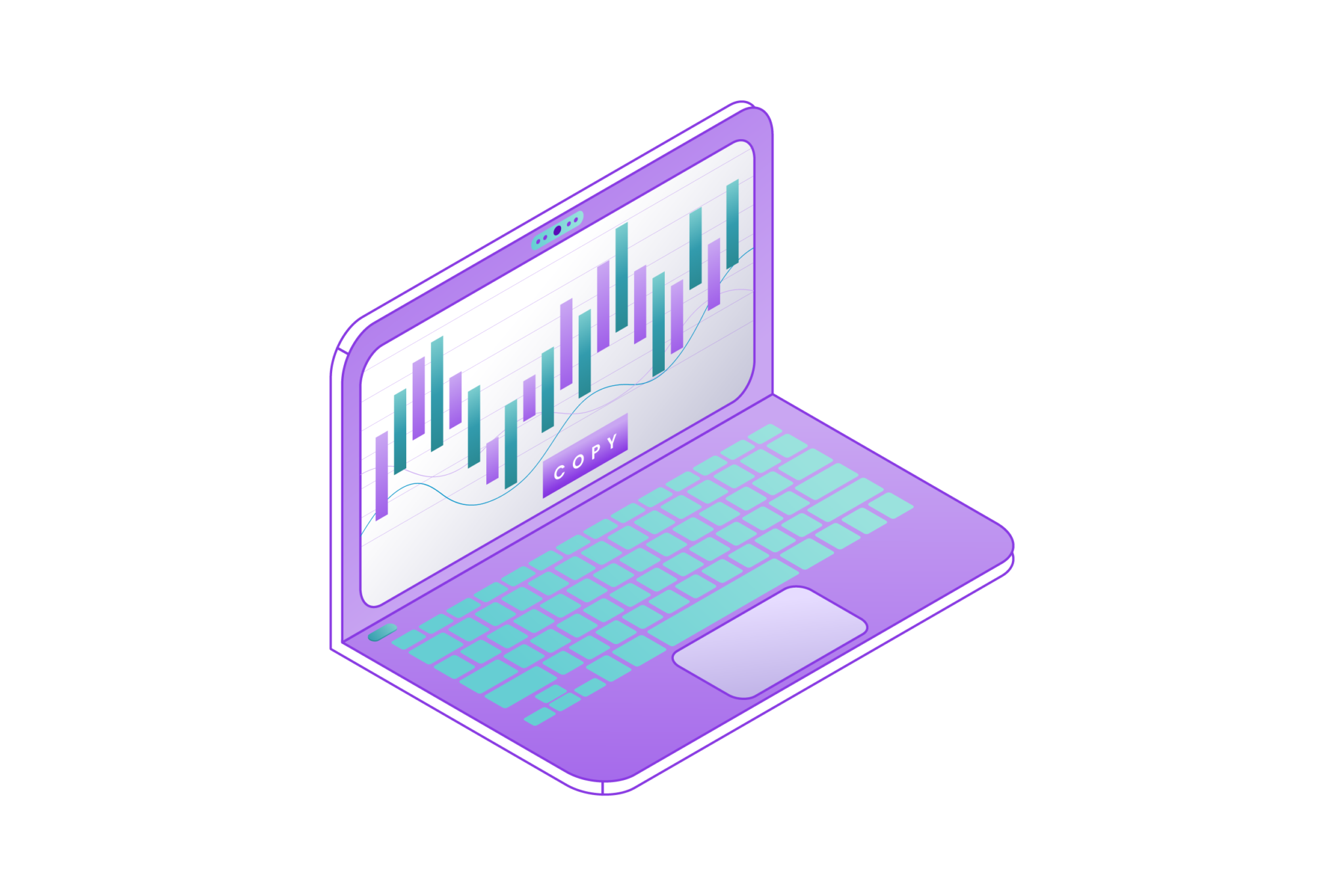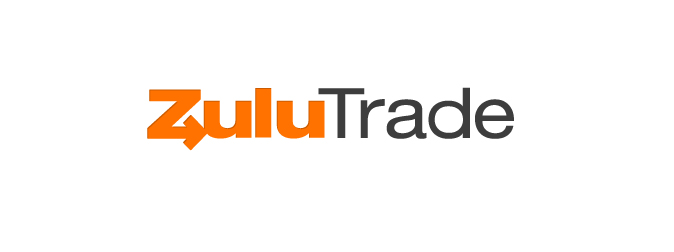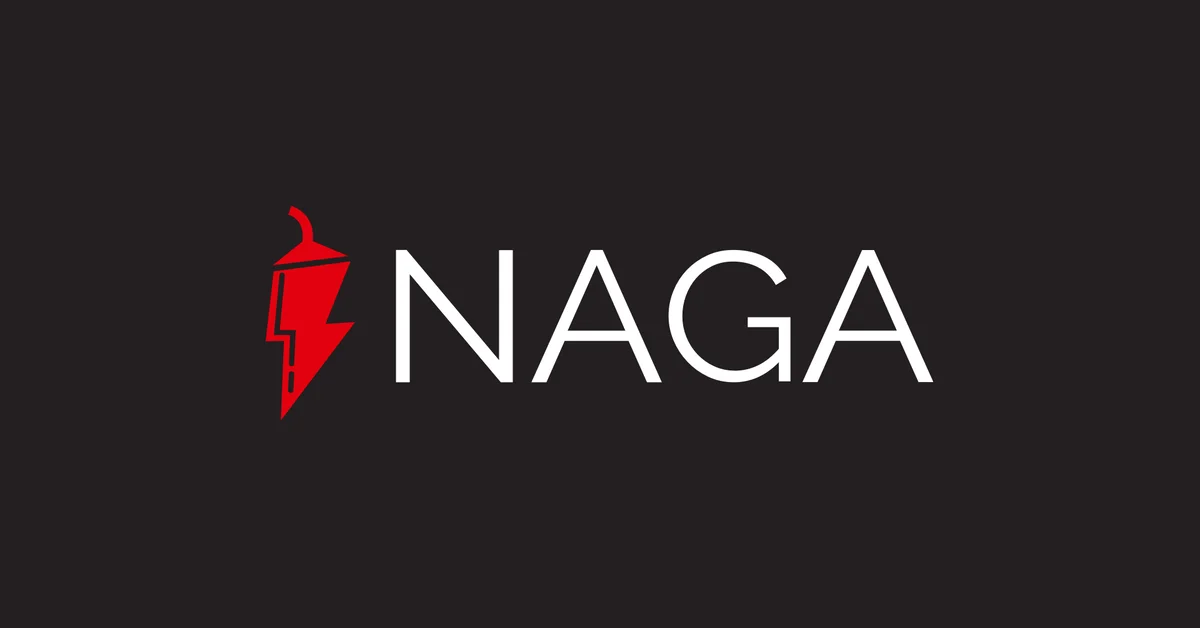
In the world of investing, copy trading has emerged as a popular method for newcomers and experienced investors alike. This innovative approach allows individuals to mimic the trades of successful investors, making it easier to navigate the complexities of financial markets. Whether you’re looking to diversify your portfolio or dip your toes into trading for the first time, copy trading offers a unique way to leverage the expertise of others.
Copy trading involves selecting a skilled trader and copying their trades in real-time. This means that every move they make in the market is automatically replicated in your account. It’s an excellent way to learn from the best while potentially earning profits without having to do all the research and analysis yourself. With the rise of various platforms facilitating copy trading, it’s now more accessible than ever.
In this article, we’ll delve into what copy trading is, how it works, and the best platforms to get you started. By the end, you’ll have a solid understanding of how to use copy trading to your advantage and which platforms offer the best features for your needs.
What is Copy Trading?

Copy trading is a strategy where one investor copies the trades of another, usually more experienced, trader. This approach allows investors to follow the trading activities of experts, essentially mirroring their strategies and decisions. It’s a form of social trading, where the trading decisions of others influence your own.
The concept is simple: you select a trader whose strategy and performance you trust, and then allocate a portion of your funds to copy their trades. When the trader you follow makes a trade, the same trade is automatically executed in your account. This can include buying or selling stocks, forex, commodities, or other assets.
Also Read: 7 Types of Trading Signals: How to Use Them Effectively
Copy trading can be beneficial for those who are new to trading and want to learn by observing seasoned traders. It also offers a hands-off approach for those who prefer not to spend time analyzing the markets but still want to participate in trading activities. However, it’s essential to choose the right trader to follow and understand the risks involved, as even experienced traders can make mistakes.
How Does Copy Trading Work?
Copy trading platforms provide a user-friendly interface that connects you with a network of traders. To get started, you need to open an account with a copy trading platform and deposit funds. Once your account is set up, you can browse through the profiles of various traders, reviewing their performance history, strategies, and risk levels.
After selecting a trader to copy, you decide how much of your capital to allocate for copying their trades. Many platforms allow you to set parameters such as stop-loss limits to manage your risk. From there, the platform takes care of the rest. Every trade the selected trader makes is automatically copied into your account, proportionate to the amount you’ve allocated.
Most platforms charge a fee for their services, which can be a percentage of the profits made from copied trades or a flat fee. It’s crucial to understand these fees before starting, as they can impact your overall profitability. Additionally, while copy trading can be a powerful tool, it’s not without risks. The performance of your investments is directly tied to the trader you follow, so choosing wisely and diversifying your copied traders can help mitigate some of these risks.
Benefits of Copy Trading

Copy trading offers several advantages, making it an appealing option for many investors. One of the primary benefits is the ability to learn from experienced traders. By observing their trading strategies and decisions, you can gain insights into market dynamics and improve your own trading skills over time.
Another significant benefit is the time-saving aspect. Traditional trading requires extensive research, analysis, and constant monitoring of the markets. Copy trading, on the other hand, allows you to leverage the expertise of others without having to invest as much time and effort. This makes it ideal for those with busy schedules or those who prefer a more passive approach to investing.
Copy trading also offers diversification opportunities. By following multiple traders with different strategies and asset classes, you can spread your risk across various markets and instruments. This can help balance your portfolio and potentially increase your chances of achieving consistent returns.
Risks and Considerations of Copy Trading
While copy trading has many benefits, it’s essential to be aware of the risks involved. The success of your copy trading endeavors is heavily dependent on the performance of the traders you follow. If they make poor trading decisions, your investments will suffer as a result. Therefore, it’s crucial to conduct thorough research before selecting traders to copy.
Market volatility is another factor to consider. Even the most experienced traders can experience losses during periods of high market volatility. Copy trading does not eliminate the inherent risks of trading, and it’s possible to lose your entire investment if the markets move unfavorably.
Additionally, fees associated with copy trading can eat into your profits. Different platforms have various fee structures, so it’s important to understand these costs and how they will impact your overall returns. Make sure to read the fine print and be aware of any hidden charges before committing to a platform.
5 Best Copy Trading Platforms for Beginners for 2025

When choosing a copy trading platform, several factors should be considered, including ease of use, fees, available assets, and the quality of traders available to follow. Here are some of the best platforms to get you started:
1. eToro
:fill(white):max_bytes(150000):strip_icc()/eToro-logo-20d30156718947bcab27419d63c29ff3.jpg)
eToro is one of the most popular copy trading platforms, widely recognized for its user-friendly interface and a broad spectrum of available assets, including stocks, cryptocurrencies, commodities, and more. One of eToro’s standout features is its social trading capability, which allows users to interact with each other, share insights, and follow the strategies of successful traders in real-time.
This makes it an excellent platform for beginners looking to learn from experienced investors. Additionally, eToro offers a feature called CopyTrader, which lets users automatically copy the trades of top-performing investors, providing a hands-on learning experience. The platform operates on a spread fee structure, meaning that users are charged a fee based on the difference between the buy and sell prices of an asset, with the exact amount varying depending on the asset class.
2. ZuluTrade

ZuluTrade is a global social trading platform that connects users with professional traders from around the world. It boasts a comprehensive ranking system that evaluates traders based on their performance, risk levels, and other metrics, helping users make informed decisions when choosing traders to follow. ZuluTrade supports a wide range of assets, including forex, stocks, commodities, and cryptocurrencies.
The platform offers a transparent environment where users can see detailed statistics and performance history of each trader. ZuluTrade charges a commission on trades, which is shared between the platform and the trader, incentivizing both parties to perform well. Additionally, ZuluTrade provides advanced tools and settings for users to customize their trading strategies and risk management, making it suitable for both novice and experienced investors.
3. NAGA

NAGA is a comprehensive financial platform that caters to copy trading, social trading, and traditional trading needs. It supports an extensive array of assets, including forex, stocks, indices, cryptocurrencies, and commodities. One of NAGA’s key features is its integrated social network, which allows users to interact, share insights, and follow the trading activities of others within the community.
NAGA also offers a unique leaderboard that showcases the top traders, enabling users to easily identify and copy successful strategies. The platform’s fee structure includes spreads and commissions, which vary depending on the asset and trading volume. NAGA also provides additional services such as a NAGA Card and NAGA Wallet for seamless transactions and storage of cryptocurrencies, making it a versatile platform for modern traders.
4. Covesting

Covesting is a sophisticated copy trading platform integrated into the PrimeXBT trading platform. It allows users to follow and copy the trading strategies of top traders, known as strategy managers. Covesting offers a transparent performance rating system that ranks strategy managers based on their performance, risk, and profitability, helping users make informed decisions. The platform supports a wide range of assets, including forex, commodities, indices, and cryptocurrencies.
Covesting charges a profit-sharing fee, which means that users pay a percentage of the profits earned from the copied trades to the strategy managers. This fee structure aligns the interests of the strategy managers and followers, encouraging successful trading practices. Covesting also provides advanced risk management tools and detailed analytics, making it a robust option for both novice and experienced investors looking to leverage the expertise of professional traders.
5. Darwinex

Darwinex is a unique copy trading platform that converts traders’ strategies into investable assets called “Darwins.” Each Darwin represents a trading strategy, and its performance is tracked and rated based on various criteria, including risk management, consistency, and returns. Investors can buy and sell Darwins on the platform, with returns directly linked to the performance of the underlying strategy. Darwinex charges a performance fee and a success fee based on the returns generated by the Darwins. This fee structure incentivizes traders to maintain high performance and manage risk effectively.
Darwinex also offers a comprehensive suite of tools and analytics for both traders and investors, including risk management tools, performance analysis, and a unique DarwinIA competition that rewards the best traders with additional capital. This makes Darwinex a compelling choice for those looking to invest in professional trading strategies and for traders seeking to monetize their expertise.
How to Choose the Right Trader to Copy
Selecting the right trader to copy is a crucial step in successful copy trading. Here are some tips to help you make an informed decision:
Performance History
Look for traders with a consistent track record of positive performance over an extended period. It’s essential to analyze their historical data, typically available over several years. Short-term gains can be enticing, but they might be the result of temporary market conditions or luck rather than skill.
A trader who has weathered various market cycles and still maintains a positive track record is likely to have a robust strategy. Consistency over time demonstrates the trader’s ability to adapt to changing market conditions, manage risks effectively, and make informed decisions that lead to sustainable growth.
Risk Management
Evaluate the trader’s risk management practices. This includes understanding how they handle losses and protect their capital. A good trader will have a clear and defined strategy for managing risk, which might include setting strict stop-loss limits to minimize potential losses, diversifying their portfolio to spread risk across various assets, and avoiding over-leveraging. Traders who consistently take excessive risks might achieve high short-term gains, but this approach can lead to significant losses in the long run. By ensuring the trader has a solid risk management plan, you can mitigate the potential for severe financial setbacks.
Trading Style
Consider the trader’s trading style and whether it aligns with your investment goals and risk tolerance. Trading styles can vary significantly, from aggressive, high-frequency trading that aims for quick profits to more conservative, long-term investing strategies. If you prefer stability and are looking for steady growth, a trader who focuses on long-term investments in stable assets might be more suitable.
On the other hand, if you’re comfortable with higher risks for the chance of higher rewards, a trader who engages in short-term trades and takes advantage of market volatility might align better with your goals. Understanding the trader’s approach and ensuring it matches your investment philosophy is crucial for a successful copy trading experience.
Also Read: What is Quantitative Trading? A Comprehensive Overview
Transparency
Choose traders who are transparent about their strategies, performance, and risk levels. Transparency is a critical factor in building trust and making informed decisions. Traders who openly share their trading methodology, past performance metrics, and potential risks provide you with a clearer understanding of what to expect. Platforms that offer detailed profiles, including comprehensive performance data, risk assessments, and historical trade records, allow you to evaluate the trader’s credibility and reliability. Transparency ensures that you can monitor the trader’s activities and make decisions based on accurate and complete information.
Community Feedback
Leverage community feedback and reviews to gauge the reputation and reliability of traders. Many copy trading platforms have social features that enable users to discuss and review traders, sharing their experiences and insights. By paying attention to the collective opinions of the community, you can identify traders who are well-regarded and have a track record of positive interactions.
Look for traders who consistently receive favorable reviews and have a supportive community around them. This feedback can provide valuable context that goes beyond raw performance data, offering a more comprehensive view of the trader’s behavior, reliability, and suitability for your investment strategy.
Conclusion
Copy trading offers a unique opportunity to participate in the financial markets by leveraging the expertise of seasoned traders. It’s an excellent way for beginners to learn and earn simultaneously while providing a more hands-off approach for those with limited time. However, like any investment strategy, it comes with its own set of risks.
To get started with copy trading, choose a reputable platform that suits your needs and preferences. Evaluate the available traders carefully, considering their performance history, risk management practices, and trading styles. Diversify your copied traders to spread risk and increase your chances of success.
By understanding the fundamentals of copy trading and selecting the right platform and traders, you can enhance your investment strategy and potentially achieve your financial goals. Whether you’re a novice investor or looking to diversify your portfolio, copy trading can be a valuable addition to your investment toolkit.
Disclaimer: The information provided by Quant Matter in this article is intended for general informational purposes and does not reflect the company’s opinion. It is not intended as investment advice or a recommendation. Readers are strongly advised to conduct their own thorough research and consult with a qualified financial advisor before making any financial decisions.

Joshua Soriano
As an author, I bring clarity to the complex intersections of technology and finance. My focus is on unraveling the complexities of using data science and machine learning in the cryptocurrency market, aiming to make the principles of quantitative trading understandable for everyone. Through my writing, I invite readers to explore how cutting-edge technology can be applied to make informed decisions in the fast-paced world of crypto trading, simplifying advanced concepts into engaging and accessible narratives.
- Joshua Soriano#molongui-disabled-link
- Joshua Soriano#molongui-disabled-link
- Joshua Soriano#molongui-disabled-link
- Joshua Soriano#molongui-disabled-link
